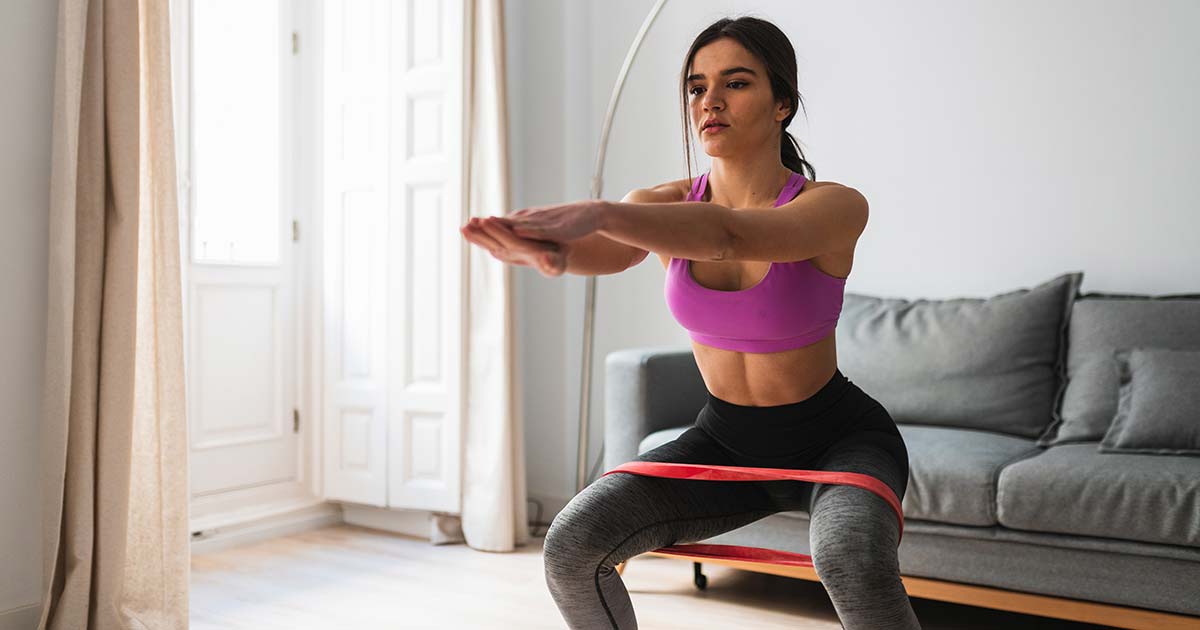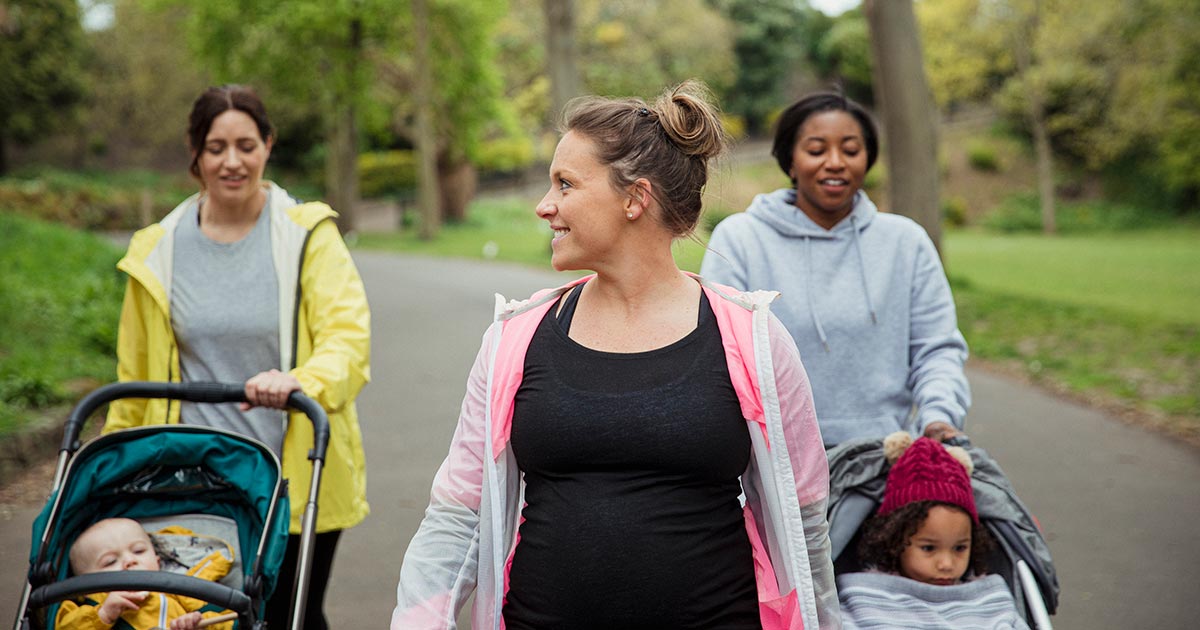
Advice to improve your movement, fitness, and overall health from the #1 in orthopedics in the U.S.
How to Exercise Safely During Pregnancy
With a few small tweaks, many forms of exercise are safe and healthy for expectant moms. Read more on guidelines for exercise during pregnancy.
Advice to improve your movement, fitness, and overall health from the #1 in orthopedics in the U.S.

Plus, regular exercise will help prepare you for the hard work of labor. (You’ll thank us later.) Of course, you should always check with your doctor to make sure you’re cleared for exercise. But most women with uncomplicated pregnancies should be able to work out safely.
So how much do you need to do and how intense should it be? Experts recommend that pregnant women aim to get a minimum of 150 minutes of moderate-intensity aerobic activity, spread throughout the week. Moderate intensity means you’re working hard enough to break a sweat and breathe a little harder, but you could still carry on a conversation (not belt out “I Am Woman”).
As far as heart rate is concerned, you’re better off relying on your rate of perceived exertion, or RPE, rather than a heart rate monitor. Your RPE is your own sense of how hard your body is working on a scale of one through 10. Yours should be under 7 while you’re pregnant. “Your metabolic rate is much higher and your blood volume’s different, so the numbers on your heart rate monitor won’t typically correlate to what they were before,” says de Mille.
Below are some healthy exercise options for expectant mothers, plus some slight modifications from de Mille to ensure they’re safe.
Walking
It’s easy, effective and free. And it can be done in 10-minute sessions if you’re short on time or get winded easily. The pumping action of the lower-body muscles helps reduce swelling in the legs, and since walking is weight bearing, it will help protect bone density.
Soon-to-be-mom modifications: Stick to paved paths and avoid uneven or slippery terrain—your center of gravity will shift as your belly bump grows. Pregnancy may cause your feet to swell, so you may need to buy a new pair of shoes. Cross-trainers may give you more support than walking shoes.
Swimming
This is one of the most wonderful forms of exercise for pregnant women. Water provides resistance with a low risk of injury, and the water keeps you cool so you can work harder without overheating. If you’re not an avid swimmer, the water’s buoyancy can help you feel fully supported as you walk or run in the pool, no matter how big your belly becomes.
Soon-to-be-mom modifications: Even if you’re not sweating you can still get dehydrated, so make sure you’re drinking enough water. And be extra careful as you enter and exit the pool, particularly as you get into the later stages of pregnancy.
Yoga
Yoga improves balance and stability, which can help when your center of gravity is rapidly changing. Yoga breathing and meditation techniques can help relieve stress and soothe the aches and pains that come with pregnancy. Certain poses can also help you open the hip joints, which could come in handy during delivery.
Soon-to-be-mom modifications: During pregnancy, your body produces more relaxin, a hormone that causes the ligaments in your pelvis to soften. This can be great during delivery but also makes you more likely to stretch a little too far. Take extra care as you change positions and always get up from the ground slowly.
Strength Training
Your musculoskeletal system is under a tremendous load for nine months. Lifting weights can strengthen the muscles surrounding the joints and help reduce the incidence of some pregnancy-related aches and pains. Pelvic floor exercises (kegels) are also important throughout pregnancy. Greater overall strength including your pelvic floor will also pay off when they hand you a 7-to-10-pound baby to carry around.
Soon-to-be-mom modifications: You’ve got hormones relaxing things, your center of gravity is off and you don’t have the same core you had before, so pay particular attention to your form. Make sure to breathe in and out evenly rather than overtax your pelvis by holding your breath and bearing down when lifting . Choose weights that will challenge you but not work you so hard that you’re straining.
Exercises to Avoid
Stay away from any sport that involves the risk of a direct blow to the abdomen by a ball or an opponent (like basketball, hockey, soccer or martial arts) or may cause you to fall (like skiing, tennis, horseback riding or skating). If you love the bike, stick with a stationary one.
Published 8/12/2021


